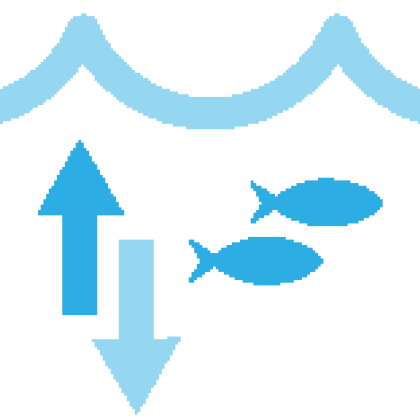


Plan for future change
Pathway for climate-resilient fisheries
Anticipate and plan for future change
Looking ahead and planning for the future can help us to avoid problems that may otherwise arise. When we manage forward, we use the best available knowledge about what the future will bring and must ask whether all aspects of our management and governance systems are set up appropriately in the face of future change.
Supporting Case Study

The Humboldt Current system is one of the most productive ecosystems on earth. Anchoveta and other economically valuable species like sardines are managed by a relatively rapid adaptive management system, drawing on specific monitoring of these species and concurrent environmental conditions. However, many other species are unmonitored, representing a gap in the knowledge of how the ecosystem is changing as a result of climate change. Therefore, a more holistic monitoring system that captures the dynamics of both the biological and the physical system will be needed to ensure that the Humboldt Current countries can respond appropriately to climate change and interpret signals that illuminate pending change. This need for better and more synoptic forecasting and rapid response tools to ensure effective and efficient adaptive management in the face of climate change has led to 1) a three-country collaboration (facilitated by EDF) to develop an early-warning system that will flag pending change for scientists, managers and stakeholders, and 2) a pooling of the technical expertise in the region to better understand the implications of climate change and how to use information from early-warning systems in management decisions. By developing these systems with partners, we are building the scientific capacity for forward-looking management in the face of climate change.
Learn more here: Can looking to the future help preserve a historical fishery against climate change?
In order to reimagine what fisheries of the future can look like...
Expand All-
How fishery management goals need to be changed in light of changing ecosystem dynamics (including potentially drastic changes to the species mix and population abundances present both regionally and in a local area);
-
What policies will be needed to meet new management goals and handle shifting dynamics; What tradeoffs are likely to be associated with various policies;
-
What appropriate management benchmarks are, in light of these expected changes, and what scientific adjustments are needed to track performance relative to these new benchmarks (e.g., changes to stock assessment processes);
-
Whether or not the information suggests that there will be disparate impacts on different human communities as a result of climate change that raise issues of equity and fairness; and
-
What kinds of uncertainties can be identified about possible future conditions and what actions can be taken to minimize risk under those uncertainties.
-
Data and monitoring to ensure it is at an appropriate spatial and temporal scale to allow for changes to be captured and more sophisticated assessments of climate impacts made.




